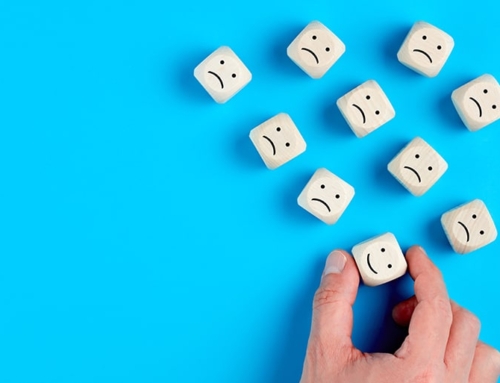This last Tuesday I really wanted to get a nice lunch AND have time over lunch to stop at a furniture store – I needed a stand or table for my office lamp.
So, I chose somewhere close and walked over to the building just south of our offices, which is Pappadeaux Sea Food Kitchen, a restaurant with mostly Cajun fare. I chose “Red Fish with Jumbo Shrimp and Squash Risotto” – its picture looked good in the menu. My waiter responded enthusiastically with, “That’s a great choice. It’s my favorite dish!” Yes, his statement really did have an exclamation point after it.
Hmmm, I thought. Out of the thirty or so entrée choices on the menu I happened to pick my waiter’s favorite one. Wow, I must be a really astute entrée picker.
After my excellent lunch choice, I hurried to West Elm, a hip and inexpensive furniture and décor store about a mile away. I chose a cylindrical copper-colored stand just big enough to fit the base of my lamp with a cup of tea next to it. The nice lady at the register said to me, “Aww, these are so cute. I love this shape. And they’re so small around and don’t take up a lot of room.” Her statement did not have an exclamation point after it but was nonetheless soothing and comforting. I really felt good about my purchase.
OK. OK. What does this have to do with placebo? A lot, actually. Let me explain.
The majority of the response from antidepressant medication has nothing to do with the chemical that’s inside the pill or capsule. In fact, in mild to moderate depression, antidepressant medication may be no better than placebo.1 The majority of the antidepressant response has to do with the patient’s BELIEF regarding the effectiveness of whatever is in the pill or capsule. And this belief in the chemical’s healing powers activates, among other things, our endogenous opioid system to provide the person relief.2
In fact, one of the biggest headaches for pharmaceutical researchers is the extremely high rates of antidepressant response in the placebo arms of antidepressant medication trials, rates sometimes in the neighborhood of 50%! Study designers have to try really hard to ensure that only more severely depressed individuals are enrolled in drug trials, since the more severely depressed have lower placebo response rates.1
What I’m advocating is that you act a little bit like the waiter and cashier I encountered a couple of days ago. Of course, don’t ever say things you don’t believe. But the good news is that you can help the patient more effectively self-heal by the way you present the medications you prescribe without being in any way “manipulative.”
Note that antidepressant medications available on the market probably have virtually identical response rates.3 So, just like at Pappadeaux, almost every choice is a great choice!
These are the steps I take when I believe a patient would benefit from an antidepressant:
- I ask the patient if they’ve ever been on antidepressant medication. I take down the list. Then I ask which one, if any, was most effective. That medication rises to the top of my list with all other things being equal.
- Especially if the patient has not been on an antidepressant medication previously, I ask what they know about this class of medications. I will often learn that the patient already has a perceived favored antidepressant, with their opinion formed either through print or TV ads, internet research, or discussion with family member or friend.
- I then decide if the patient’s favored antidepressant is a good choice given their condition, response history, demographic features, suicide risk through overdose, etc.
- If their choice is an appropriate one, I say, “That’s a very good medication!” (With a semi-exclamation point.)
- Of course, then I go on to explain the risks and benefits as I would do otherwise.
What I want to do is have my friend, the placebo effect, work for the patient’s benefit. When you disrespect the placebo effect, it can get angry. When it does, it turns into its evil twin! Don’t believe me? Look up the nocebo effect.
Mmmmmwwwwwahahahahaha!
In case you don’t know, that the written form of the nocebo’s evil laugh.
And by the way, thanks for reading. It’s an excellent choice for spending a few minutes of your time! (Exclamation point included.)
Until next time,
Dr. Jack
References:
- Fournier JC, DeRubies RJ, Hollon SD, et al. Antidepressant Drug effects and Depression Severity: A Patient-Level Meta-Analysis. JAMA. 2010 Jan 6; 303(1): 47–53. doi: 10.1001/jama.2009.1943
- Pecuna M, Bohnert ASB, Sikora M, et al. Association Between Placebo-Activated Neural Systems and Antidepressant Responses Neurochemistry of Placebo Effects in Major Depression. JAMA Psychiatry. 2015;72(11):1087-1094. doi:10.1001/jamapsychiatry.2015.1335
- Del Re AC, Spielmans GI, Fluckiger C, Wampold BE. Efficacy of New Generation Antidepressants: Differences Seem Illusory. Plos One June 3, 2013 doi.org/10.1371/journal.pone.0063509
LanguageBrief
Today’s Quotes
“The essence of work after providing for our simple survival is an intimacy between two seemingly opposing poles: an interior closeness to a foundational sense of self, and the felt longing for some recognized outer and as yet invisible horizon to which we dedicate our endeavors.”
– David Whyte, Consolations The Solace, Nourishment and Underlying Meaning of Everyday Words, 2015






Leave A Comment